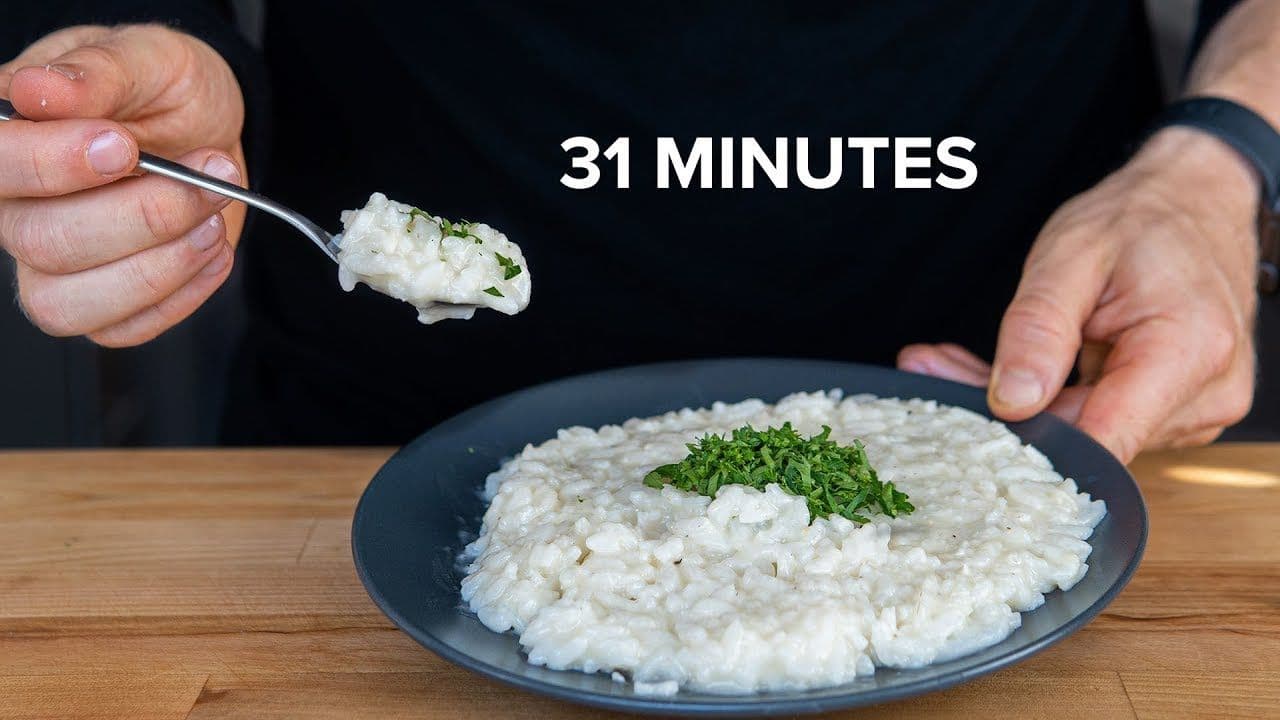Everyone should understand how to make risotto — it’s a great weeknight meal to have in your arsenal.
We’ll summarize a few concepts from the video that allow you to make risotto in any style/texture:
1) Know the basic risotto process
Pretty much every risotto recipe follows these steps:
- the aromatic base
- Coat the rice with fat and lightly
- Cook the rice to the desired doneness
- Adjust creaminess and garnish
Steps 3 and 4 are where things can go wrong, so here’s what you should know:
2) Nail the rice texture
Arborio rice is widely available in U.S. supermarkets but Carnaroli or Vialone Nano rice are equally respected risotto options. Check their packaging for suggested rations, but risotto generally uses 1 part rice to ~3 parts water, but it depends on many factors.
- The beauty of risotto is that you can just keep adding cooking liquid until the grains cook through to your desired bite.
Traditionalists will argue for firm, al dente cooked rice texture. But you can keep adding liquid and cooking the rice as you wish. Here are general timelines:
- Firm: ~15 min
- Tender: 15-20 min
- Soft: 20-25 min
3) Dial in the final risotto consistency
When the rice has reached your desired toothsomeness, decide the final texture of the risotto by adding a bit more liquid to the pan to loosen it up, or evaporating some liquid to tighten it up. Risotto consistencies vary regionally in Italy:
- Loose & pourable = Venetian style (more common).
- Compact & sticky = Piedmont/Milanese/Bolognese style.
Finally, adding extra ingredients like grated cheese, butter, or dairy can help achieve the creamy body of the risotto.



